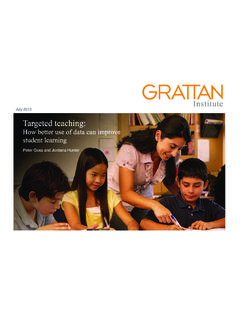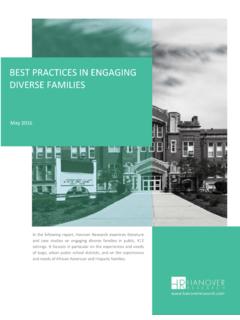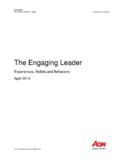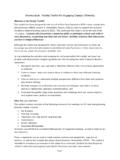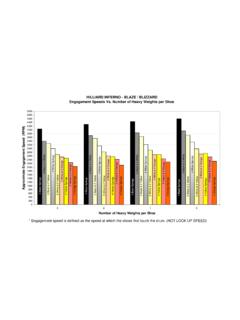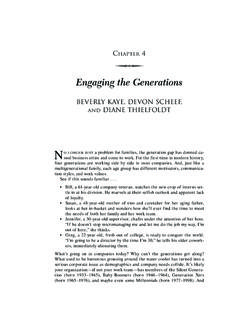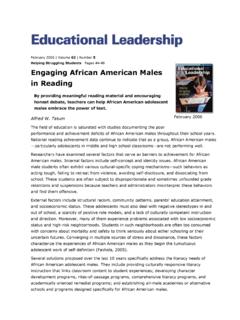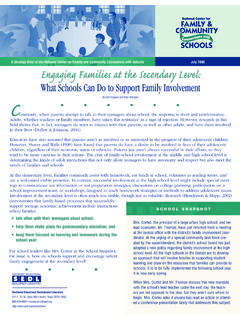Transcription of Engaging students: creating classrooms that …
1 Engaging students: creating classrooms that improve learningGrattan Institute SupportFounding membersAffiliate PartnersGoogleMedibank PrivateSusan McKinnon FoundationSenior AffiliatesEYMaddocksPwCThe Scanlon FoundationWesfarmersAffiliatesAshurstCor rsDeloitteGE ANZThe Myer FoundationUrbisWestpacGrattan Institute Report No. 2017-01, February 2017 This report was written by Peter Goss, Julie Sonnemann, and KateGriffiths. Carmela Chivers made substantial contributions to the would like to thank the members of Grattan Institute s SchoolEducation Program Reference Group for their helpful comments, aswell as numerous government and industry participants and officials fortheir opinions in this report are those of the authors and do notnecessarily represent the views of Grattan Institute s foundingmembers, affiliates, individual board members reference groupmembers or reviewers.
2 Any remaining errors or omissions are theresponsibility of the Institute is an independent think-tank focused on Australianpublic policy. Our work is independent, practical and rigorous. We aimto improve policy outcomes by Engaging with both decision-makers andthe further information on the Institute s programs, or to join our mailinglist, please go to: report may be cited as: Goss, P., Sonnemann, J., and Griffiths, K. (2017). Engaging students: creating classrooms that improve learning. Grattan : 978-1-925015-98-0 All material published or otherwise created by Grattan Institute is licensed under aCreative Commons Attribution-NonCommercial-ShareAlike Unported LicenseGrattan Institute 20172 Engaging students: creating classrooms that improve learningOverviewWhen students are engaged in class, they learn more.
3 It is vital thatteachers create the right classroom climate for learning: raising studentexpectations; developing a rapport with students; establishing routines;challenging students to participate and take risks. These all affect howmuch their students engage and Australia, many students are consistently disengaged in class: asmany as 40 per cent are unproductive in a given year. The main prob-lem is not aggressive and anti-social behaviour. More prevalent andstressful for teachers are minor disruptions, such as students talkingback. Nor is it just about noise: nearly one in four students are compli-ant but quietly do not know exactly what causes students in Australia to disengage it could be problems at home, or subject matter that is too hard or tooeasy, or poor-quality teaching.
4 But we do know disengagement students are one to two years behind their peers. Studentswho are quietly disengaged do just as badly as those acting out, anddisruptive behaviour also reduces how much other students are calling for more support on classroom strategies. Newteachers rate handling difficult student behaviours as their top pro-fessional challenge and most feel under-prepared by their teachers with years of experience struggle. Nearly one third ofall teachers are highly stressed by the challenges of Engaging and re- Engaging students in class. This can become a downward spiral, wherepoor teacher responses disrupt the class and lead to more student disengagement is complicated.
5 What is taught andthe way it is taught are crucial. But creating a good learning environ-ment in the classroom is necessary report calls for policy reforms to build teacher capabilities to im-prove classrooms . It avoids simplistic calls for old-fashioned discipline ,but it also acknowledges that compelling content is not enough on must first know what strategies and approaches work best inthe classroom. This means Australia s initial teacher education coursesneed to focus more on evidence-based techniques. Teachers thenneed to learn how to create the right learning climate, and how to re-spond well in the heat of the leaders must go beyond creating a school-wide behaviour must also provide practical support for teachers, with opportuni-ties for collaboration, observation and feedback, which are especiallyimportant for developing these nuanced classroom skills.
6 And govern-ments should direct more support to disadvantaged schools where stu-dent engagement is these recommendations will help create a better learn-ing environment in every Australian classroom, so that every child canreach their learning Institute 20173 Engaging students: creating classrooms that improve learningRecommendationsSchool-level recommendationsA school-wide behaviour management plan is not enough A school-wide behaviour management plan is essential, but notenough. Schools should also build teacher capabilities topro-actively create effective classroom all teachers with practical support to improve the classroomclimate for learning Strengthen induction programs for all beginning teachers, andensure they are led by expert mentors.
7 Provideallteachers with regular opportunities to collaborate withtheir colleagues and to give and receive feedback on how toimprove the classroom climate for learning. Provide practical tools to help teachers: engage their classes, such as student response cards identify triggers for student disengagement so they can adaptand improve their recommendationsStrengthen university training for trainee teachers Government should only accredit initial teacher education courseswhich: teach evidence-based techniques for Engaging andmanaging students, and whose graduates can demonstratethat they can apply these approaches in practice.
8 Include school placements with time in challenging classesguided by an expert mentor, as well as time at the start of theschool year when expectations and routines are the use of evidence in classrooms Make the extensive evidence-based theory on classroomenvironments more accessible to schools and teachers. Invest in tools at scale that help teachers assess and improveengagement, so each school does not reinvent the support to struggling schools Target support to low socio-economic schools, where studentengagement is better information on why students are disengaged Collect better data to provide more insight into studentengagement on the ground, with more nuanced Institute 20174 Engaging students: creating classrooms that improve learningTable of contentsOverview.
9 3 Recommendations .. 41 The classroom environment matters to student learning .. 62 Many students are disengaged in Australian classrooms .. 103 Teachers struggle with low-level disengagement and disruption . 154 How to create classrooms that improve learning .. 21 Part A: What works best .. 21 Part B: How to implement what works best .. 265 Schools can do more to empower teachers .. 286 System reforms are essential .. 32A International comparisons of classroom environments .. 35 Grattan Institute 20175 Engaging students: creating classrooms that improve learning1 The classroom environment matters to student learningWhat teachers teach (the curriculum) and how they teach it (pedagogy)are central to the value of every lesson.
10 But other elements of teachingmatter this report we look at one of these other elements of effective teach-ing creating a classroom environment that gives all students the bestopportunity to learn. A good learning environment raises student ex-pectations, encourages them to participate, and ensures that no stu-dent can fly under the it right, and students will thrive in the class; they may even love it wrong, and the classroom can become a place of stress, infectingthe teacher and the Classroom environments affect teachers and studentsAt the start of every year, teachers have the opportunity to create aneffective learning environment.
